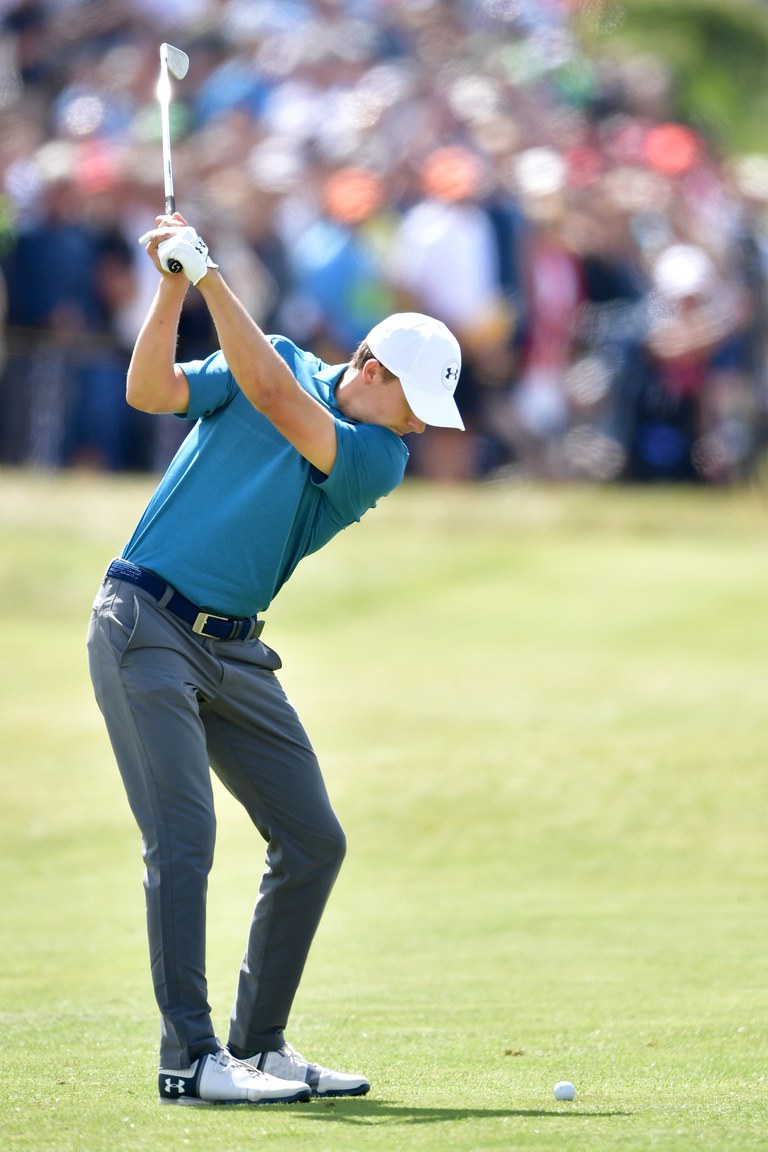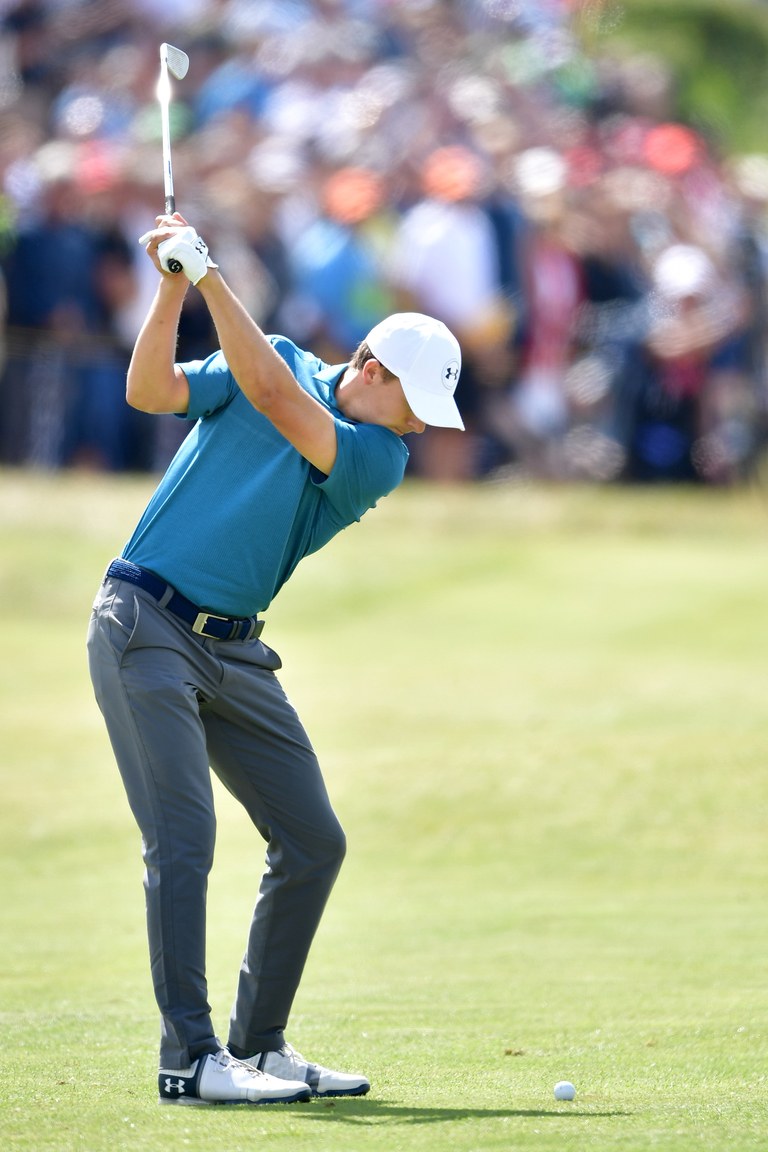
It turned out just fine in the end for Jordan Spieth. Playing the final five holes of a major in five under will buff out plenty of scratchy parts.
But for the first 12 and a half holes on Sunday, Spieth was certainly scratchy. His tee shot on the 13th was especially traumatizing–a push block that shot 75 yards right of his intended line and bonked a spectator on its way to an unplayable lie.
It looked like a shot a 20-handicapper would hit–and it came because of a problem very common to the rest of us mortal players. "Jordan is an incredible competitor, but every once in awhile he seems to hit a couple of bad ones–like the tee shot on 13, or some of the wedges he's hit fat," says Golf Digest Best Young Teacher Michael Jacobs, who is based at the X Golf School in Manorville, NY. "I see those shots potentially coming from something he's doing in the transition. His knee hinge–the amount his knees are bending–is changing."
On the drive at 13, Spieth got to the top of his backswing and initiated his downswing by hinging his left knee more and anchoring his weight down into that leg, says Jacobs. "It feels powerful, but what it does is create a situation where you run out of space near the ball. He has to back up out of the shot near impact."
"Earlier in the year, he was striking the ball impeccably. In transition, his knees had equal flex, and he was creating plenty of hip rotation to start downswing–hip hinge instead of knee hinge," says Jacobs. "I'm sure it's something he and Cameron McCormick have been working on, and when he has down all the way, he's going to be untouchable."

